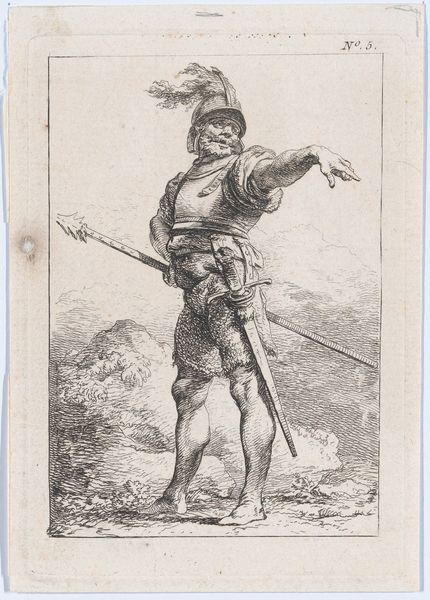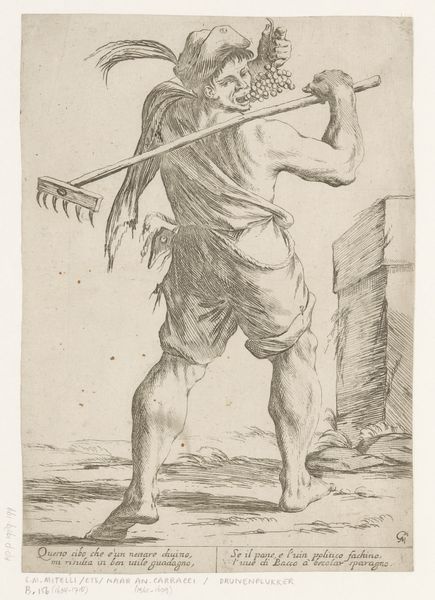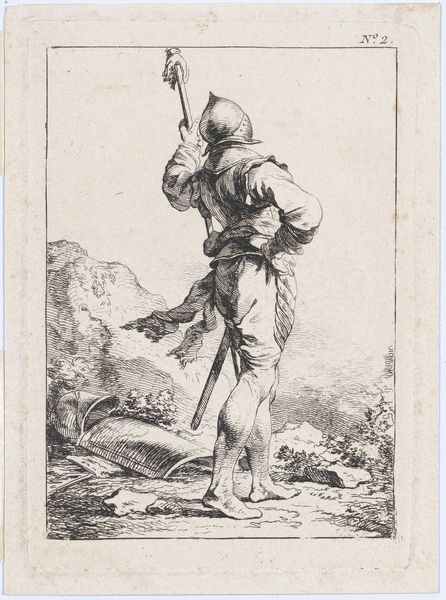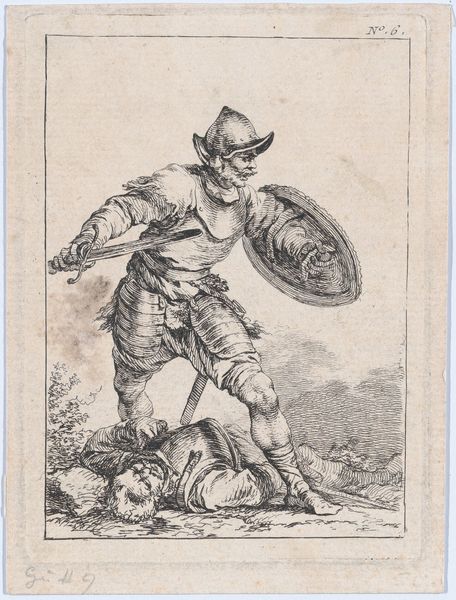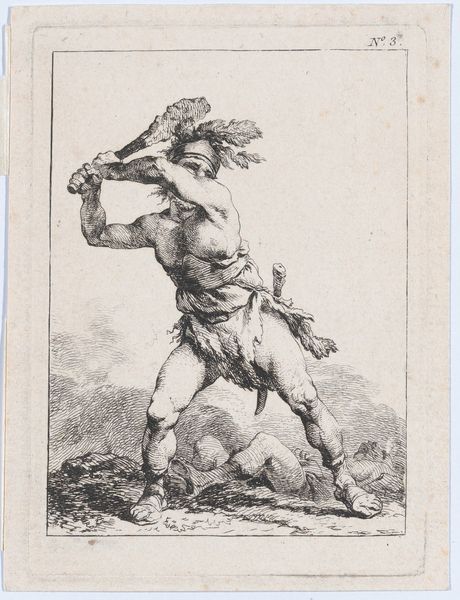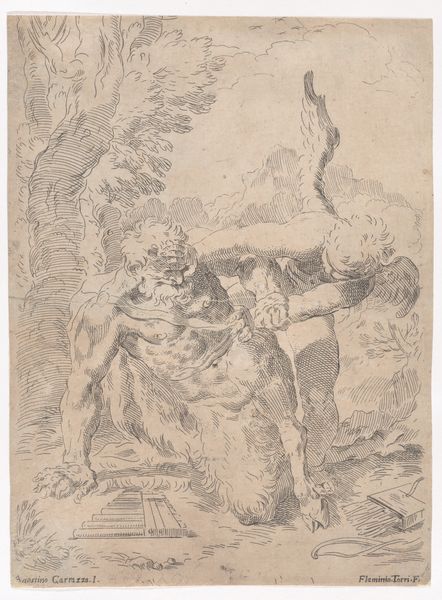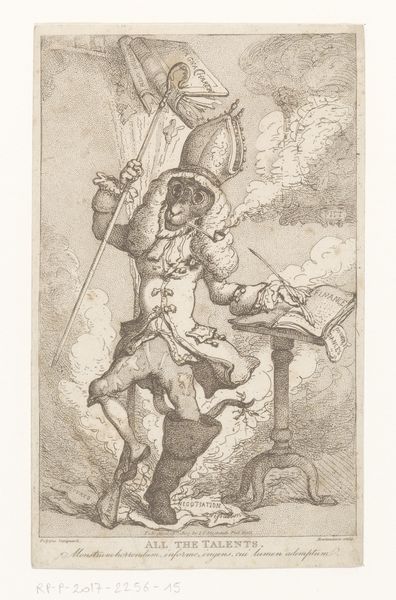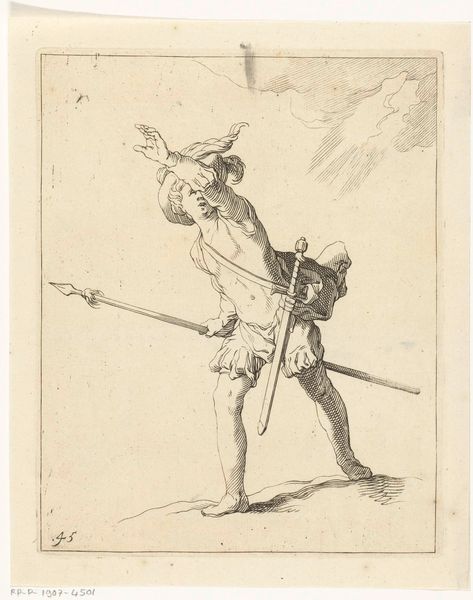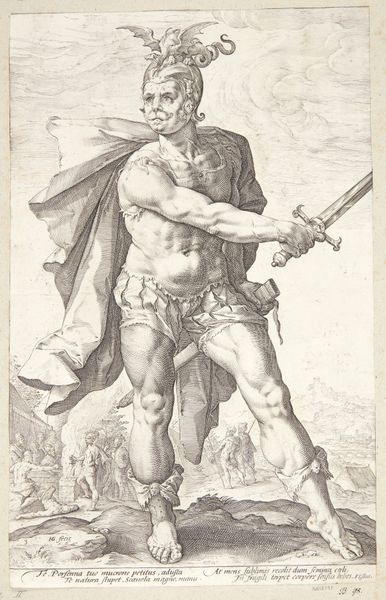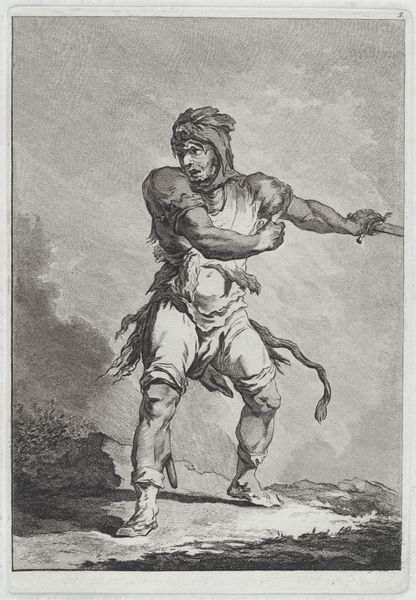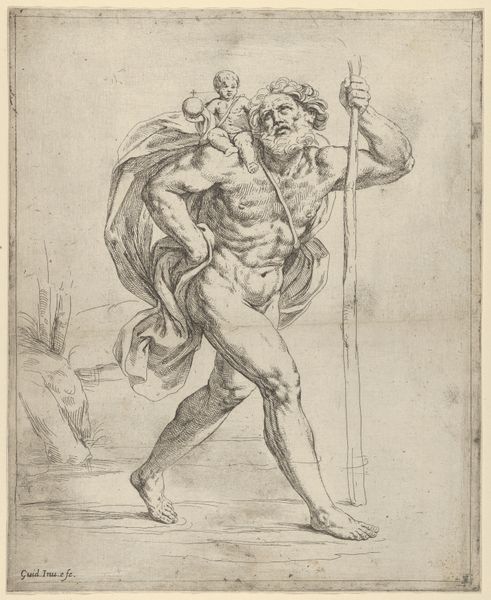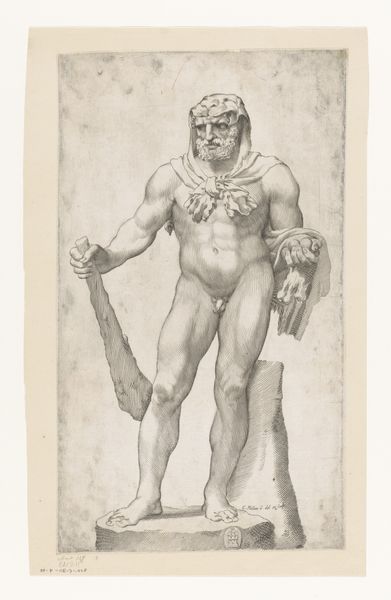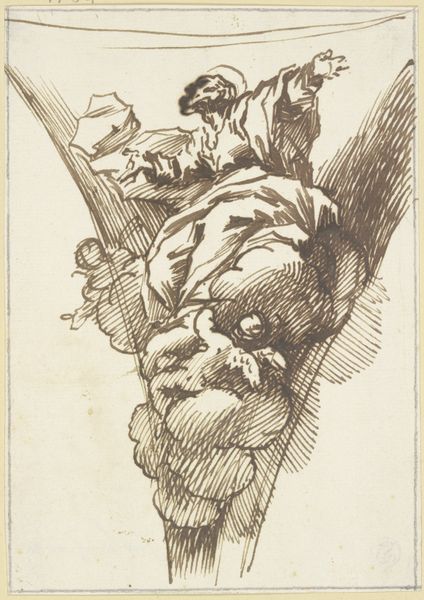
Standing Soldier Holding a Rolled Flag 1755 - 1771
0:00
0:00
drawing, print, etching, engraving
#
portrait
#
drawing
# print
#
etching
#
figuration
#
soldier
#
history-painting
#
engraving
#
realism
Dimensions: Image: 4 3/16 × 3 1/16 in. (10.6 × 7.8 cm) Plate: 4 3/4 × 3 1/2 in. (12.1 × 8.9 cm) Sheet: 5 3/16 × 3 3/4 in. (13.1 × 9.5 cm)
Copyright: Public Domain
Editor: Here we have Philippe Jacques de Loutherbourg’s “Standing Soldier Holding a Rolled Flag," created sometime between 1755 and 1771. It’s a print, an etching or engraving. There's a rather forlorn air about the soldier and I was curious about what you notice when you view this print? Curator: For me, it’s the way the artist uses line. It’s not just descriptive, it’s evocative. Each scratch seems to carve not just the soldier’s form, but also a certain mood... weariness perhaps? See how the lines deepen in the shadowed areas, emphasizing the weight of his armor, the sag of the rolled flag? I see history etched in burden, do you sense that, too? Editor: Absolutely, there’s something about his posture…almost defeated. The etching feels so immediate and raw. It reminds me a little of Goya's prints. Is that a common association? Curator: Good eye! Definitely echoes of Goya there – that unromantic portrayal of conflict. And that huddled figure behind him-- Is that a casualty, or just someone weary from battle like himself, lost in quiet reflection as if weighing what the fighting really gained? Makes you think, doesn’t it? Editor: It certainly does. I suppose it disrupts our common idea of what bravery and courage is during conflict. I find this even more moving and real as a result of your insights! Curator: Precisely. It transcends simply being a soldier's portrait and turns into a kind of visual poem on sacrifice. Seeing how we, even now, frame sacrifice and victory in war through rose-colored glasses... perhaps there’s some discomfort worth diving into when examining older works with newer vision. What a privilege art is!
Comments
No comments
Be the first to comment and join the conversation on the ultimate creative platform.
